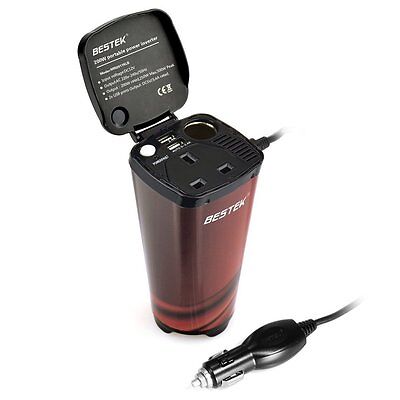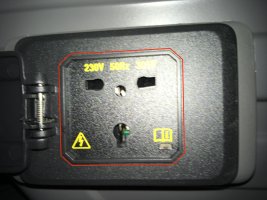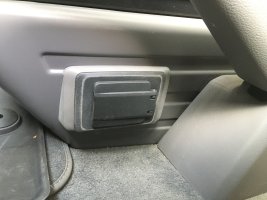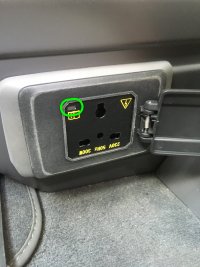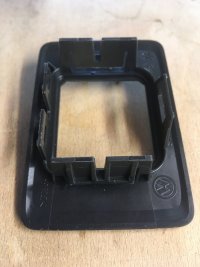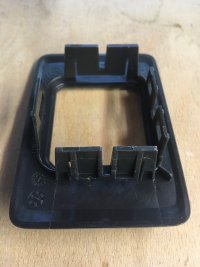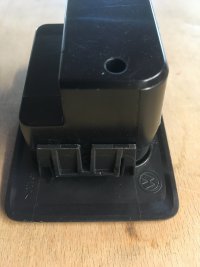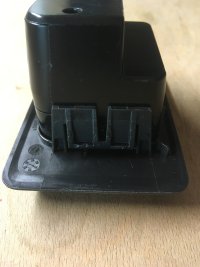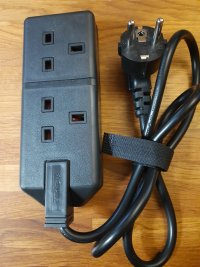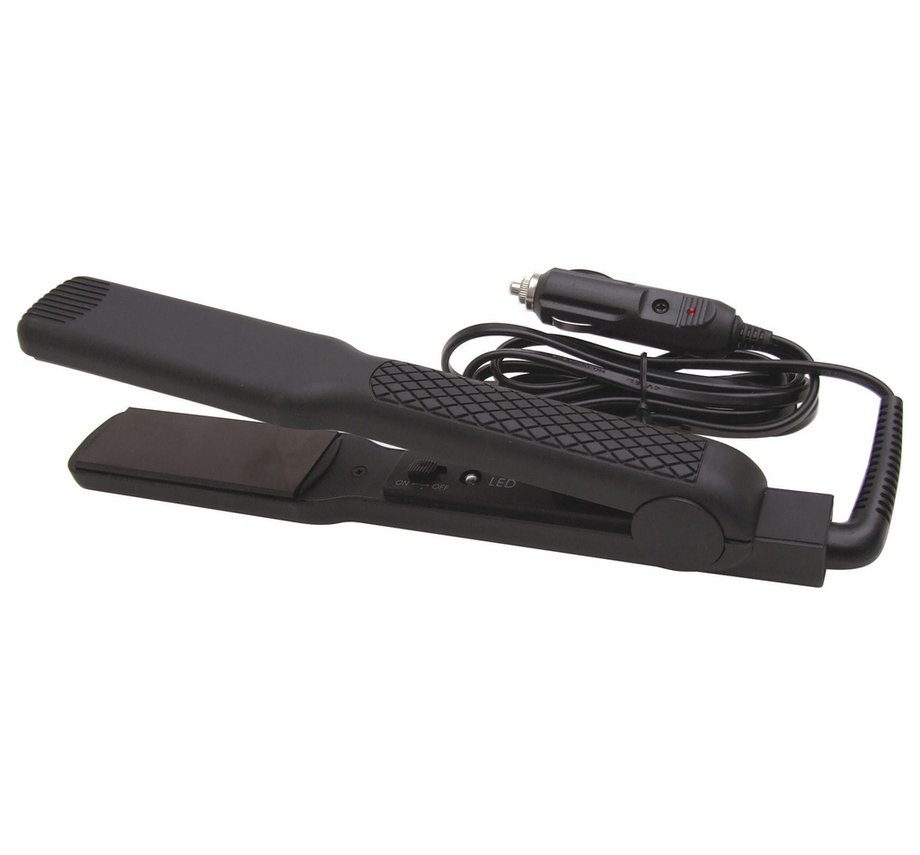SEE UPDATE AT BOTTOM:
Further to my novice mains-user post in March this year, I subsequently found that the little ca. 2mm high raised ridge around the mains socket front face prevents some (probably most!) plugs from going down flat on the plate and connecting successfully to the 240V supply.
This is clearly quite a nuisance, so today I managed to get the unit off in order to dress down the offending stand-proud until it was nearly flush, tested it - all good - and reassembled it.
I also took the opportunity to refit the unit the 'correct' way up, so with the earth pin uppermost allowing the lead to point to the floor, which means that i) the annotation on the socket face is now upside down - who cares!, ii) the tell-tale ON-light is uppermost, so easier to see, and iii) the sprung-loaded cover now folds backwards towards the handbrake lever, so is out of the way and less vulnerable.
It was murder to get the unit out, and I had to remove the seat from its plinth to try to see what was going on, but once I got it out I realised how easy it would be to do once you knew which are the clips to spring to release the receptacle, and where they are!
You MUSTN'T remove the facia plate on the side of the seat base UNTIL you have the 3-pin receptacle out from the inside - if you try to do it in the wrong order you will almost certainly break something!
If anyone needs to do this same mod., or at least wants to get the driver base mains socket and facia plate off, give me a shout and I'll do a 'how-to'.
(NB the outline of paler grey abrasion marking at the chamfered extremity of the facia plate looks dreadful in the 2 photos below, whereas in reality it is hardly even discernible!)
HERE BELOW THE ORIGINAL TRIO ARE 4 MORE PHOTOS SHOWING THE RECEPTACLE FOR THE MAINS SOCKET, WITH AND WITHOUT THE MAINS SOCKET CLIPPED IN - SORRY, I DIDN'T TAKE A SHOT OF THE MAINS SOCKET ON ITS OWN - I CAN GO BACK IN AND TAKE IT OUT AGAIN (NOW THAT I KNOW HOW!) IF NEED BE . . .
View attachment 100702
View attachment 100705
View attachment 100706
View attachment 100716
View attachment 100717
View attachment 100718
View attachment 100719




